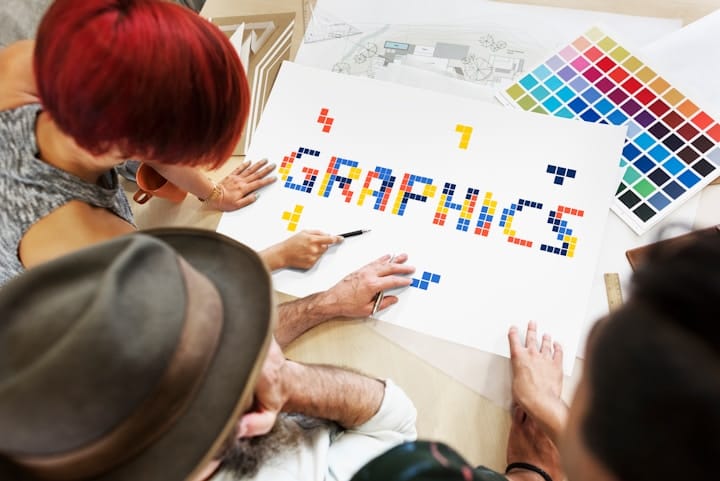Introduction
In the age of information overload, the art of storytelling has become crucial for brands and individuals alike. While textual narratives hold their value, the integration of visuals into storytelling is significantly more impactful. Visuals are potent tools that can clarify complex ideas, evoke emotions, and bolster engagement. As people are increasingly drawn to visually appealing content, understanding the role of visuals in storytelling is paramount for effective communication.
This blog post explores the essential role visuals play in storytelling across different platforms and mediums. It will delve into how visuals enhance narrative techniques, improve audience engagement, and boost overall comprehension. We'll also analyze the psychological impact of visuals, provide actionable tips for incorporating visuals in storytelling, and highlight successful case studies that demonstrate the effectiveness of visual storytelling.
Skip Ahead
- The Power of Visuals in Storytelling
- Types of Visuals That Enhance Stories
- Psychological Impact of Visual Storytelling
- Tips for Integrating Visuals into Your Storytelling
- Case Studies of Successful Visual Storytelling
- The Future of Visual Storytelling
The Power of Visuals in Storytelling
Visuals possess an intrinsic power that transcends language barriers and enhances the storytelling experience. Whether through photographs, illustrations, graphics, or videos, visuals serve several vital functions in storytelling:
1. Enhancing Engagement
Visual elements have been shown to capture attention more effectively than text alone. According to a study by Psychology Today, messages accompanied by compelling visuals are 43% more persuasive and memorable. This increased engagement helps to foster a connection between the audience and the narrative.
2. Increasing Retention
Research indicates that people remember about 65% of the information they see as opposed to only 15% of what they read. When a story is accompanied by impactful visuals, the likelihood of retention and recall rises dramatically, leading to deeper understanding and connection with the narrative.
3. Evoking Emotions
Visuals can evoke powerful emotional responses. The human brain processes images faster than words, making it easier for audiences to connect emotionally with visual content. This emotional engagement can inspire action, whether it be sharing content or participating in a cause.
4. Clarifying Complex Ideas
In advanced topics like data science, medicine, or technology, visuals simplify complex information, making it more digestible for the audience. Infographics and diagrams can break down intricate ideas into understandable snippets, aiding comprehension and retention.

Types of Visuals That Enhance Stories
There are various types of visuals that can be employed to emphasize and complement storytelling. Here are some noteworthy examples:
1. Infographics
Infographics combine information and visuals to convey complex data succinctly. They are particularly effective at summarizing content, ideal for educational purposes and social media sharing. Tools like Canva allow users to create impressive infographics with ease.
2. Photographs
High-quality photographs can evoke emotion and captivate audiences. They enhance the human connection, making the story feel relatable and personal. Companies like Unsplash offer free stock photography to incorporate into your storytelling.
3. Illustrations and Icons
Custom illustrations can add a unique flair to storytelling, allowing for creativity and personalization. Icons are useful for simplifying concepts or processes, often employed in digital storytelling and web design.
4. Videos
Videos are a dynamic medium for storytelling, combining visuals, sound, and motion to engage audiences. Platforms like YouTube have made video storytelling incredibly accessible. Videos can encompass everything from short clips to in-depth documentaries.
5. Charts and Graphs
For data-driven stories, charts and graphs visually represent relationships and trends in data. Tools like Tableau can help create compelling visualizations that add weight to your narrative.

Psychological Impact of Visual Storytelling
Understanding the psychological aspects of visual storytelling is crucial for effective implementation. Here are some critical elements:
1. Visual Hierarchy
Visual hierarchy dictates how viewers perceive information. By strategically using size, color, and placement, storytellers can guide viewers' attention to key elements. For instance, larger fonts and bolder colors often indicate prominence or importance, ensuring essential messages stand out.
2. The Role of Color
Color psychology plays a significant role in shaping audience perception. Different colors evoke various emotions—blue conveys trust, red signifies excitement, and green symbolizes nature. Brands and storytellers must be conscious of the colors they choose, as they can significantly affect how the narrative is received.
3. Cognitive Dissonance
Visuals can trigger cognitive dissonance when they contradict what audiences expect. This technique often prompts thought and discussion, making it a powerful method for increasing engagement. However, it’s crucial to balance this with clear messaging to avoid confusion.
4. Storytelling Flow
Visuals can help maintain narrative flow, ensuring that the story transitions smoothly from one point to the next. Utilizing visuals strategically at each phase of the story keeps the audience engaged and facilitates comprehension.
Tips for Integrating Visuals into Your Storytelling
The successful integration of visuals into storytelling requires thoughtful planning and creativity. Here are some actionable tips to guide you:
1. Identify Your Audience
Understanding the preferences of your target audience is essential. Consider their demographics, interests, and cultural backgrounds to tailor visuals that resonate with them effectively.
2. Choose the Right Medium
Select the appropriate medium based on the story's content and message. For educational content, infographics might be best, while emotionally driven narratives may benefit from video testimonials or photographs.
3. Use Consistent Branding
Maintain consistent visual branding across all storytelling platforms. This includes utilizing the same color palette, typography, and design elements that align with your brand identity.
4. Prioritize Quality
High-quality visuals should always be a priority. Grainy pictures and poorly designed graphics can detract from the story's message. Invest in quality photography or design resources to ensure professional results.
5. Test and Iterate
Gather feedback from viewers to ascertain what types of visuals are resonating most effectively. Use analytics to determine which visual content performs best in engagement and retention. Be prepared to iterate and adapt based on this feedback.

Case Studies of Successful Visual Storytelling
1. National Geographic
National Geographic is renowned for its captivating visual storytelling, often blending stunning photography with compelling narratives. Their articles effectively utilize visuals to enhance understanding of environmental issues, creating emotional connections with readers.
2. Coca-Cola
Coca-Cola’s “Share a Coke” campaign effectively combined visuals with personalized bottle labels to connect with its audience emotionally. The images of people enjoying their drinks while sharing experiences demonstrated the brand's core messaging of togetherness.
3. TED Talks
TED Talks offer a masterclass in visual storytelling through engaging presentations combined with impactful visuals. Speakers often utilize slides to illustrate points while connecting with the audience emotionally, resulting in memorable talks.
Related Blog: The Power of Storytelling in Marketing Campaigns
The Future of Visual Storytelling
As technology evolves, the landscape of visual storytelling will continue to change. The rise of augmented reality (AR) and virtual reality (VR) opens new avenues for immersive experiences, ensuring audiences engage with stories like never before. Tools such as Adobe Spark provide more accessible ways to create rich, multimedia narratives.
Additionally, with the growth of social media platforms, video content will continue to dominate, allowing brands and individuals alike to share their stories in new and exciting ways. Staying aware of these trends and embracing new technologies will be essential for successful visual storytelling in the future.
Conclusion
Visuals are indispensable to modern storytelling. They not only bring narratives to life but also enhance audience engagement and understanding. By integrating various forms of visuals—ranging from infographics to videos—storytellers can create compelling narratives that resonate with diverse audiences.
As we continue to navigate a rapidly evolving digital landscape, recognizing the importance of visuals in storytelling is vital for achieving impactful communication. Investing in quality visuals, understanding your audience, and staying updated with trends will ensure that your stories engage, inform, and inspire.







